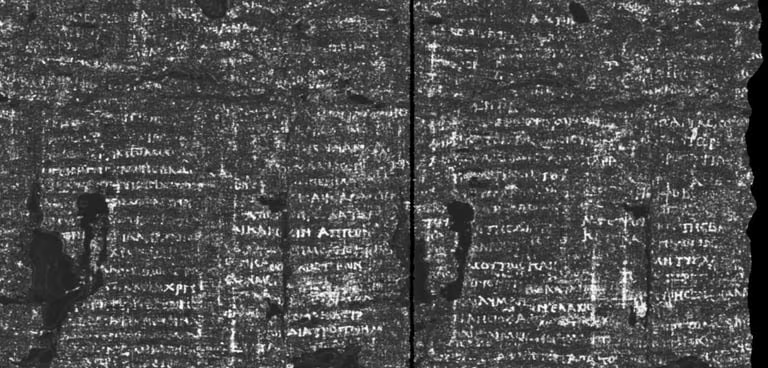Artificial intelligence, often envisioned for futuristic applications, is now playing a transformative role in uncovering the mysteries of the ancient world. In a groundbreaking achievement, researchers from the University of Oxford have successfully used AI to help decipher a 2,000-year-old papyrus scroll from Herculaneum — a Roman town buried under volcanic ash during the eruption of Mount Vesuvius in AD 79.
This significant development highlights a growing synergy between modern technology and the study of antiquity, particularly in the field of digital archaeology. The scroll, part of the Bodleian Library collection, had long resisted interpretation due to its fragile and carbonized state. However, through a partnership with the global initiative Vesuvius Challenge, researchers utilized high-resolution scans from the Diamond Light Source, a synchrotron facility in Oxfordshire, to digitally reconstruct the interior of the scroll without damaging it.
The breakthrough stemmed from the chemical composition of the ink used by the ancient scribe. Unusually, the ink in this particular scroll contained trace amounts of lead, making it more visible in X-ray scans than typical carbon-based inks. AI algorithms, trained specifically to detect such chemical traces, were then deployed to highlight potential areas of text within the digital scans.
Crucially, the AI did not translate or transcribe the content itself; instead, it served as a detection tool to guide human scholars. Experts in paleography from the Vesuvius Challenge then carefully analyzed the AI-identified areas to reconstruct the text — a delicate task requiring both technological and classical expertise.
Early findings include the ancient Greek word διατροπή (meaning “disgust” or “aversion”), which appears at least twice. This tantalizing clue, though fragmentary, has ignited excitement among classicists and digital archaeologists alike, suggesting that more recoverable content remains hidden within the scroll and others like it.

Dr. Brent Seales, co-founder of the Vesuvius Challenge, expressed his enthusiasm:
“We’re thrilled by the success of scanning this particular scroll. It appears to contain significantly more readable text than other Herculaneum manuscripts scanned to date.”
Efforts are now ongoing to expand and refine this method, with the hope of fully unlocking hundreds of other scrolls preserved at Herculaneum.
This collaborative success stands as a milestone in heritage science — not only in recovering lost knowledge but also in demonstrating how AI can complement human scholarship. As technology continues to evolve, the ability to read long-lost texts without ever unrolling them may redefine what is possible in archaeology.
Cover Image Credit: Exterior of scroll PHerc. 172. Credit: Vesuvianus Challenge.





